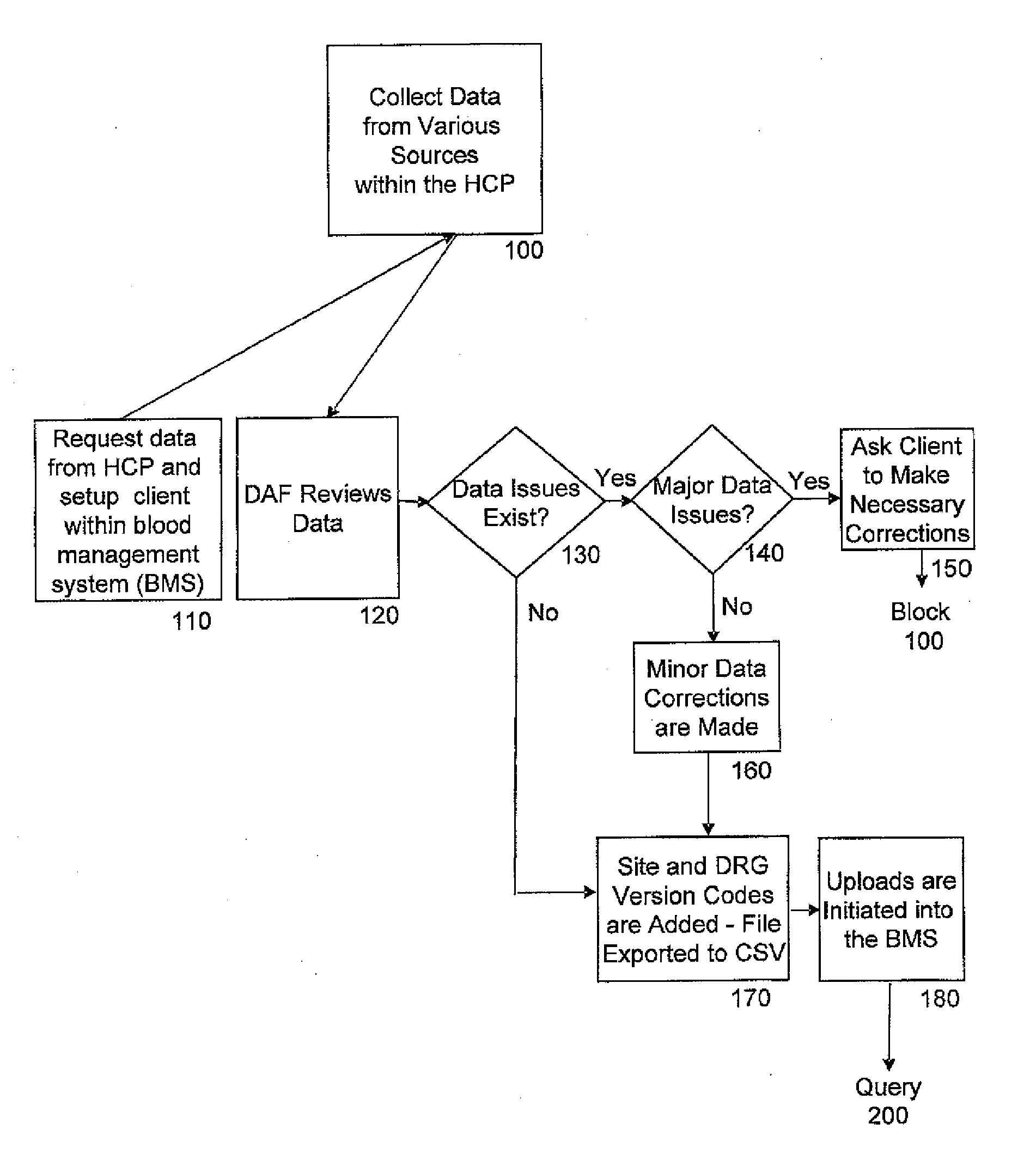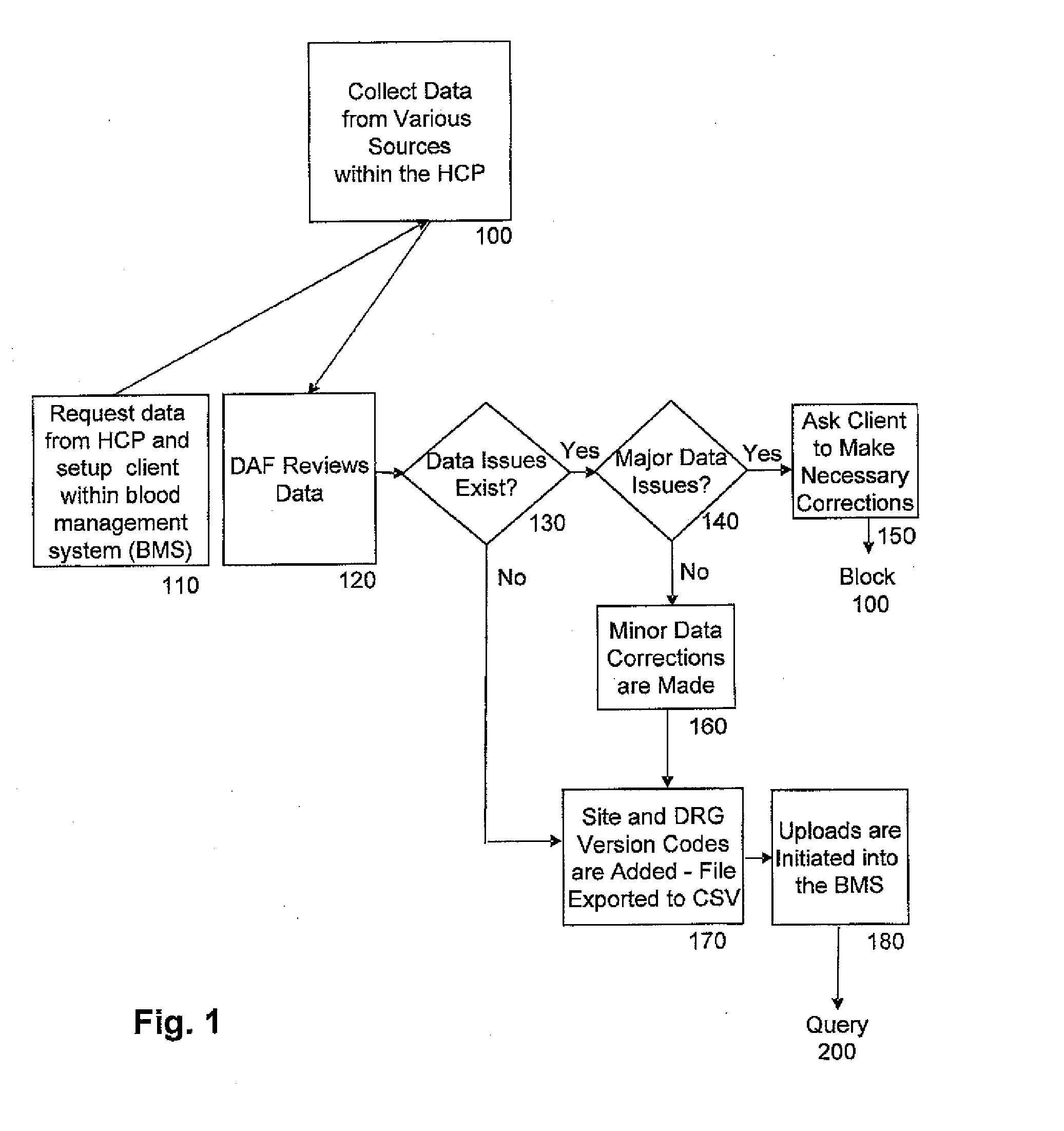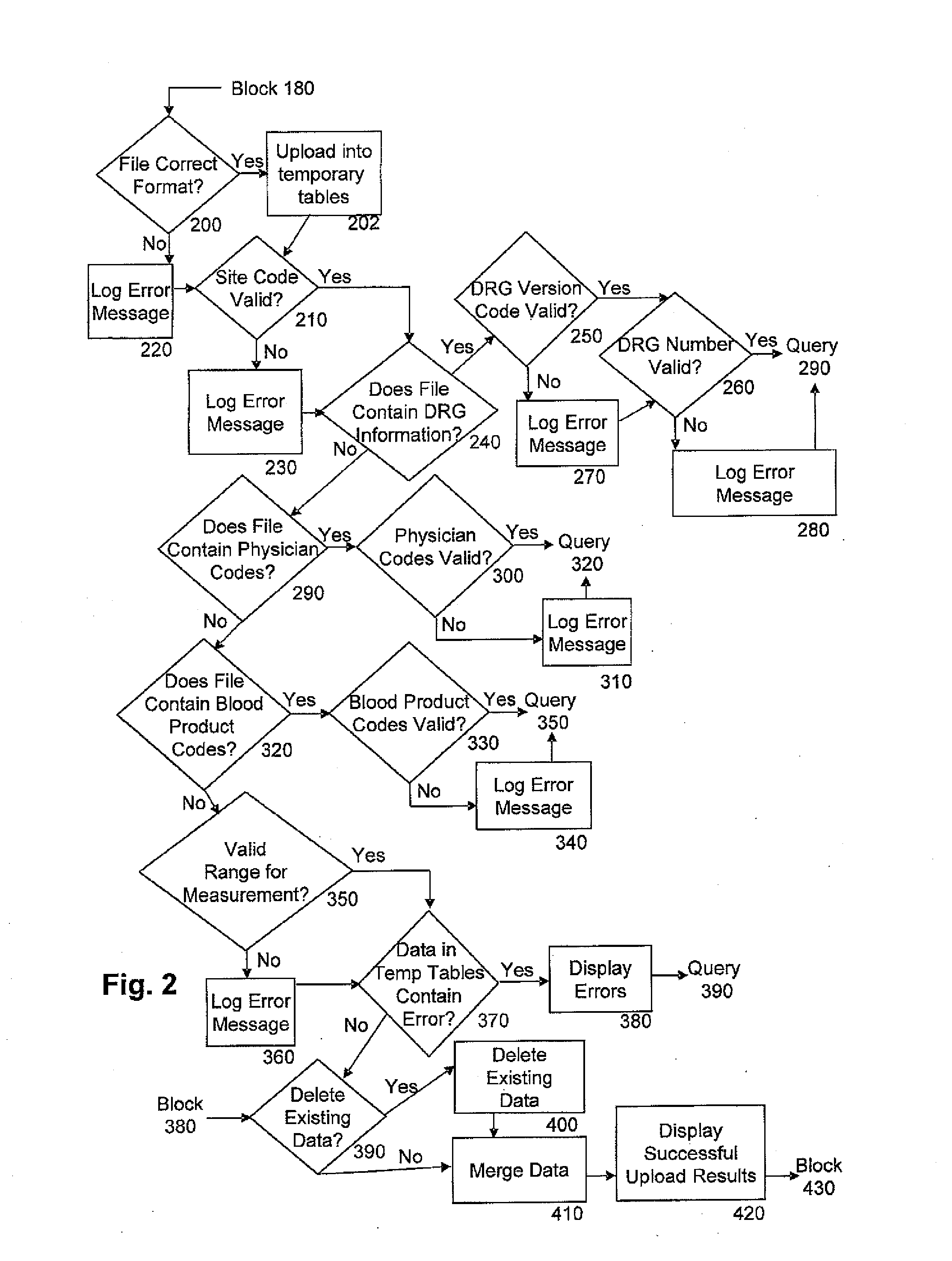Method for optimizing blood utilization
a blood utilization and utilization technology, applied in the field of blood utilization systems, can solve the problems of consuming a precious resource without benefiting patients, most physicians who order blood products lack formal training in transfusion therapy, and most nursing schools generally fall short in their training in transfusion safety and blood administration competency, so as to improve the utilization of blood products, and manage blood product utilization.
- Summary
- Abstract
- Description
- Claims
- Application Information
AI Technical Summary
Benefits of technology
Problems solved by technology
Method used
Image
Examples
Embodiment Construction
[0014]The embodiments of the present invention described below are not intended to be exhaustive or to limit the invention to the precise forms disclosed in the following detailed description. Rather, the embodiments are chosen and described so that others skilled in the art may appreciate and understand the principles and practices of the present invention.
[0015]According to the current teachings, methods involved in monitoring and improving the utilization of blood components may be altered in substantial ways. The method of the current teachings manipulates data obtained from health care provider facilities, such as hospitals and clinics. Patient-related data from the health care providers, hereinafter HCP, is obtained from these facilities and manipulated by a computer system as will be discussed in detail below. The computer system is located at a data analysis facility, hereinafter DAF, with provisions to review the data that is obtained from and sent to the HCP facilities as ...
PUM
 Login to View More
Login to View More Abstract
Description
Claims
Application Information
 Login to View More
Login to View More - R&D
- Intellectual Property
- Life Sciences
- Materials
- Tech Scout
- Unparalleled Data Quality
- Higher Quality Content
- 60% Fewer Hallucinations
Browse by: Latest US Patents, China's latest patents, Technical Efficacy Thesaurus, Application Domain, Technology Topic, Popular Technical Reports.
© 2025 PatSnap. All rights reserved.Legal|Privacy policy|Modern Slavery Act Transparency Statement|Sitemap|About US| Contact US: help@patsnap.com



